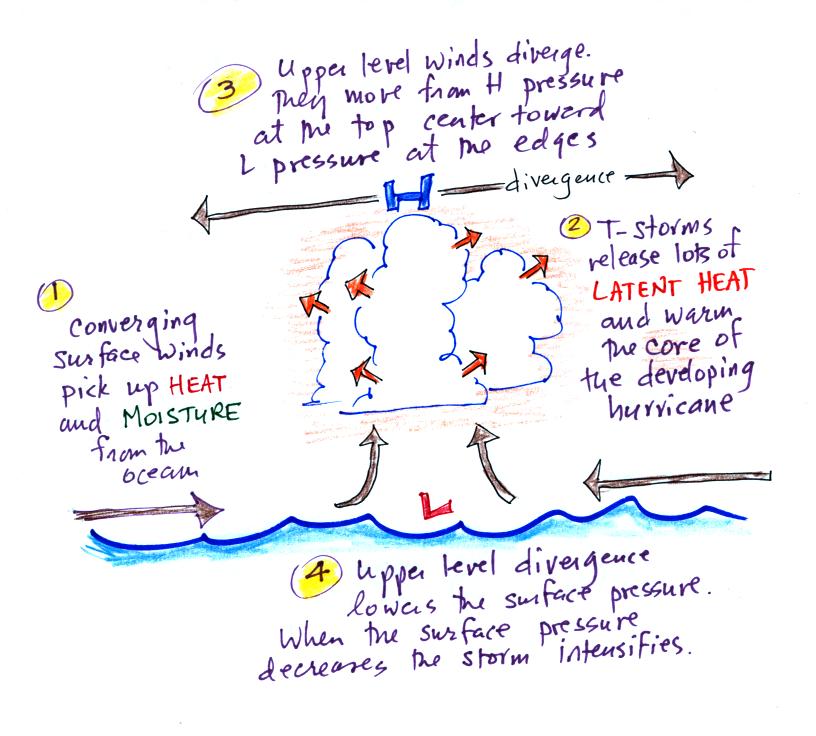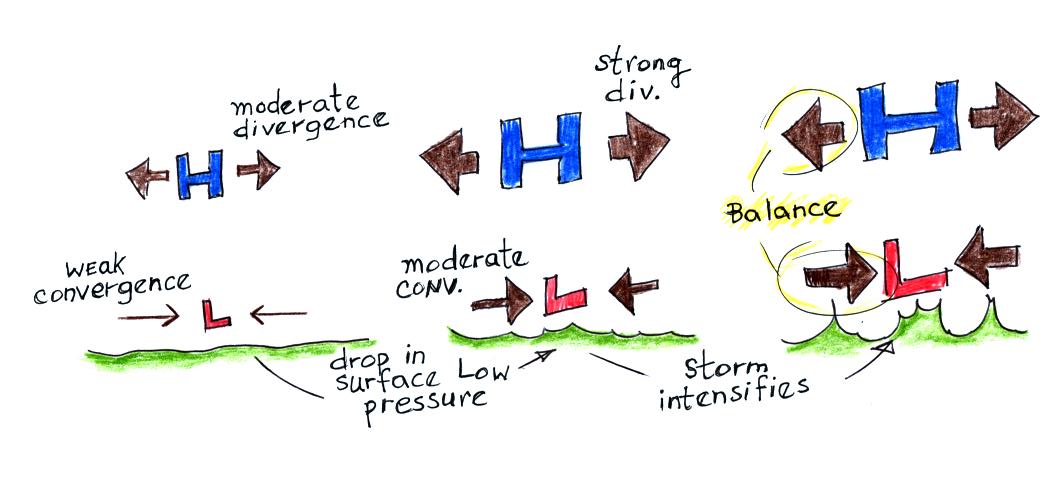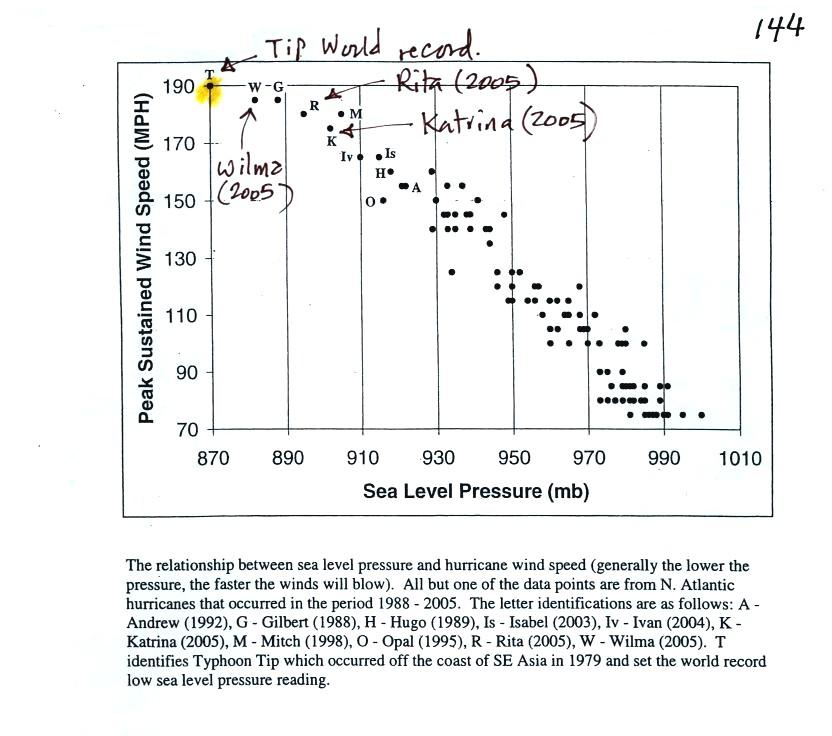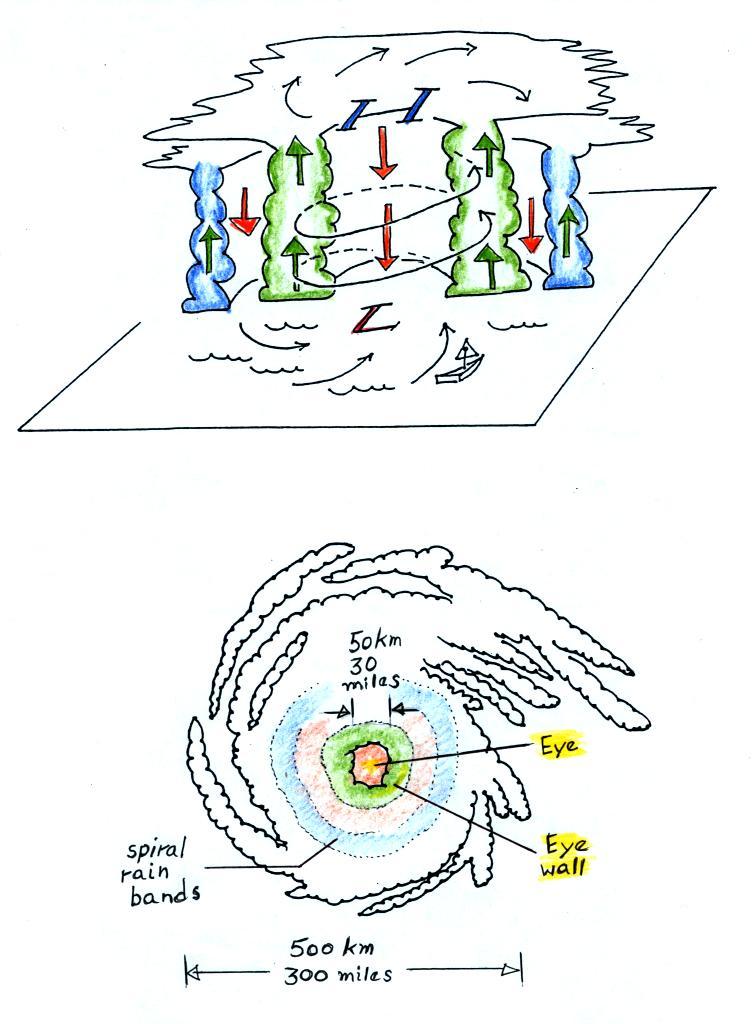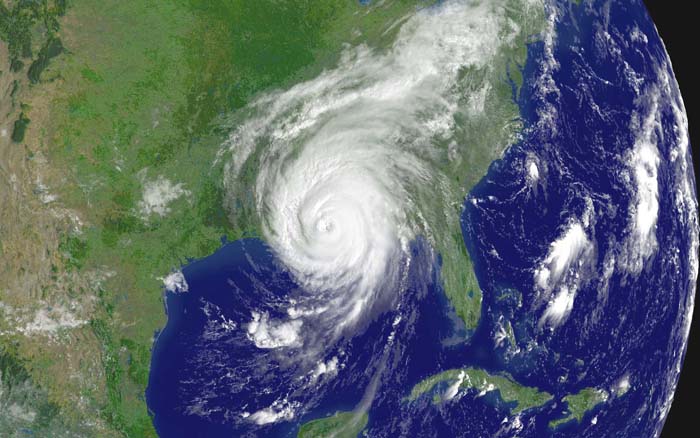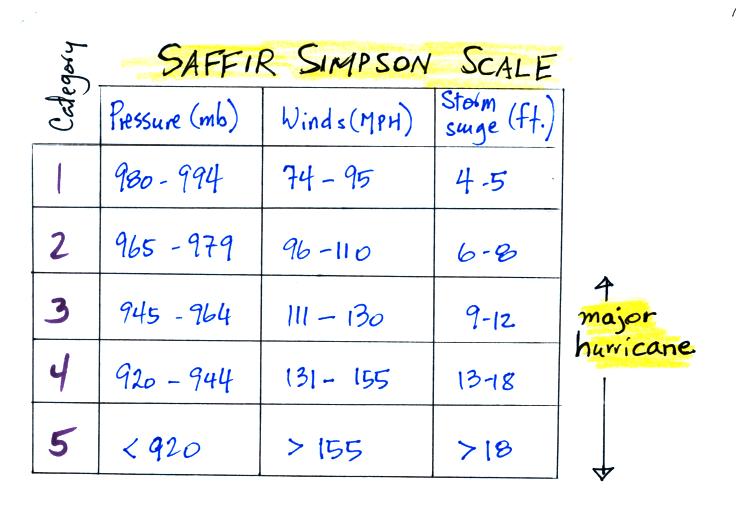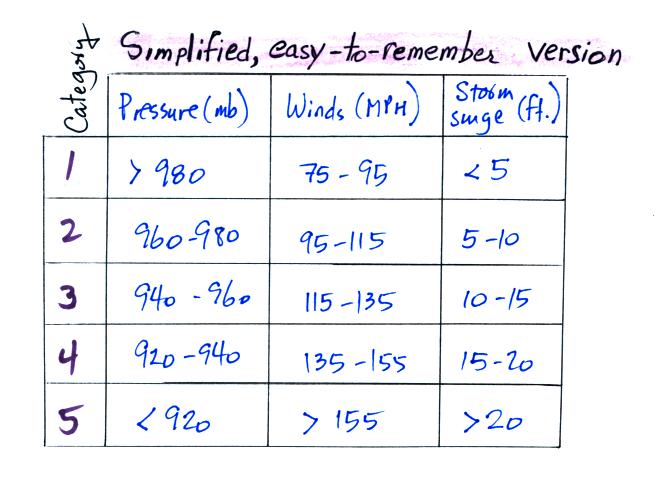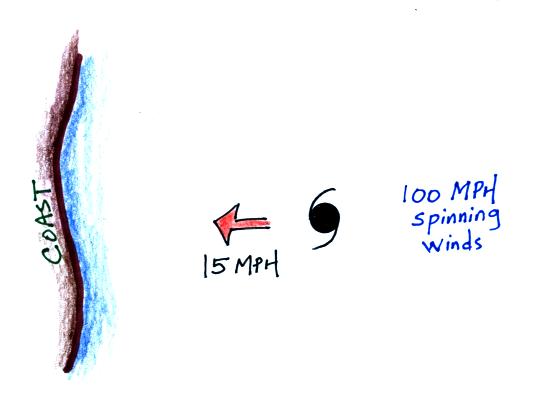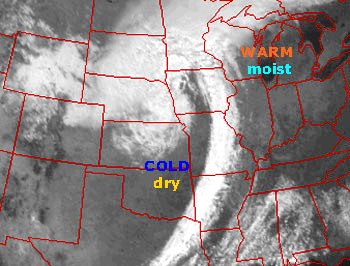
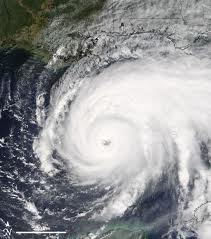
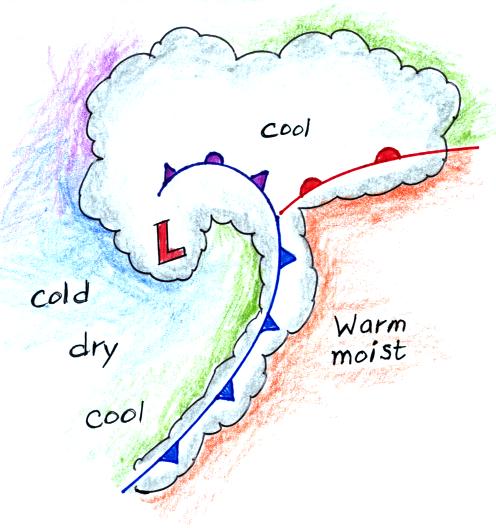
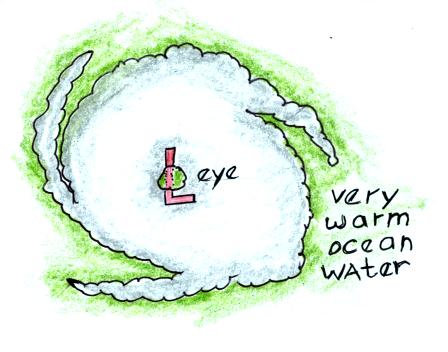
| Year |
Deaths |
Total
Damage
($billions) |
| 2001 |
24 |
5.1
|
| 2002 |
51 |
1.4 |
| 2003 |
14 |
1.9 |
| 2004 |
34 |
19.6 |
| 2005 |
1016 |
95.1 |
| 2006 |
0 |
<
1 |
| 2007 |
1 |
<
1 |
| 2008 |
12 |
8.0 |
| 2009 |
2 |
<
1 |
| 2010 |
0 |
<
1 |
| 2011 |
9 |
< 1 |
| 2012 |
4 |
< 1 |
| 2013 |
1 |
< 1 |
 |
 |
 |
 |
| Similarities |
| 1. both types of storms have low pressure centers (the term cyclone refers to winds blowing around low pressure) |
| 2. upper level
divergence is what causes both types of storms to
intensify (intensification means the surface low
pressure gets even lower) |
| Differences
(the order may differ from that given in class) |
|
| 1. Middle latitude
storms are bigger, 1000 or 2000 km in diameter (half the US) |
1. Hurricanes are
smaller, a few 100s of km in diameter (fill the Gulf of Mexico) |
| 2. Formation can occur
over land or water |
2. Can only form over
warm ocean water & weaken rapidly when they move over land or cold water |
| 3. Form at middle (30o
to 60o) latitudes |
3. Form in the sub
tropics, 5o to 20o latitude |
| 4. Winds at middle
latitudes (the prevailing westerlies) move these storms
from west to east |
4. Easterly winds in the
tropics (the trade winds) move hurricanes from east to west |
| 5. Storm season: late
fall and winter (strong thunderstorms and
tornadoes in early spring) |
5. Storm season: late
summer to fall (when ocean water is warmest) |
| 6. Warm and cold air
masses collide along fronts |
6. just warm moist air |
| 7. All types of
precipitation: rain, snow, sleet, freezing rain |
7. Mostly just lots of rain (often a foot or more) |
| 8. Only an occasional
storm gets a name ("The Perfect Storm", "Storm of the Century", "Superstorm Sandy" etc.) |
8. Tropical storms &
hurricanes all get names (determined by an
international committee of some kind) |
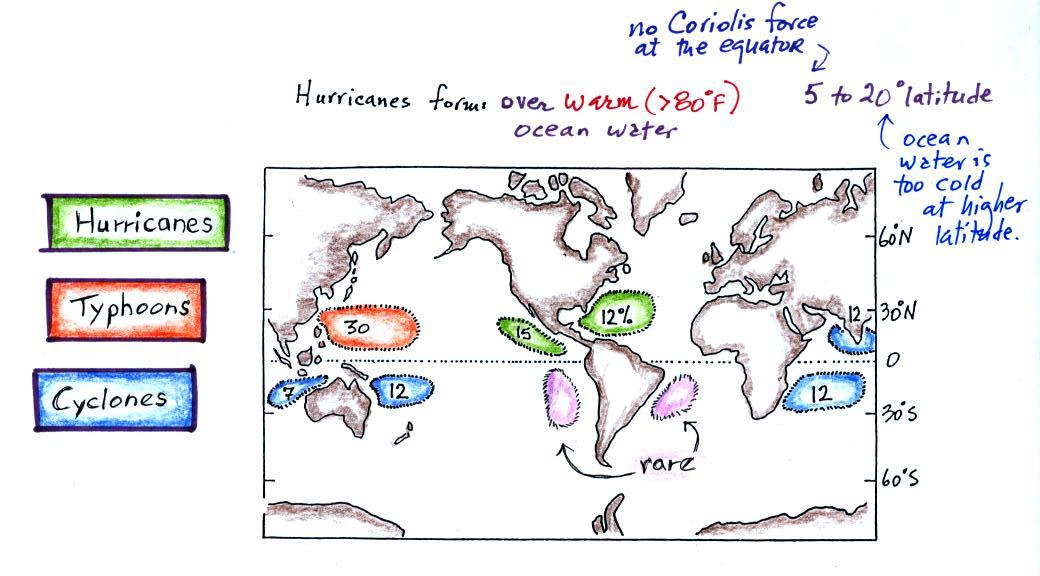
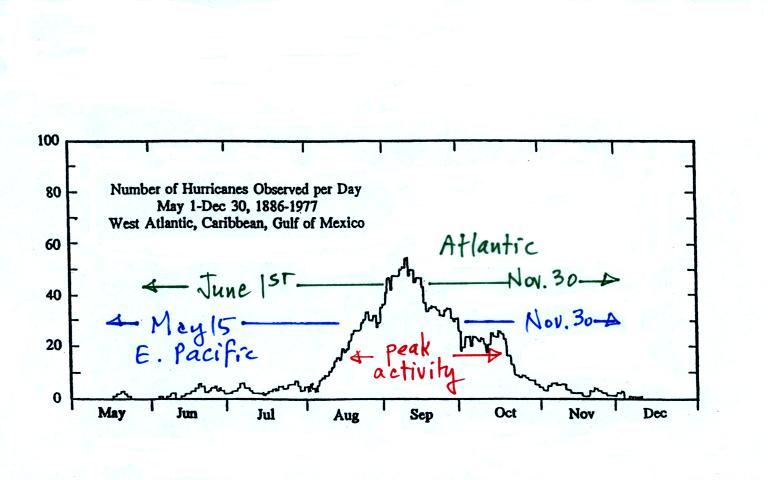
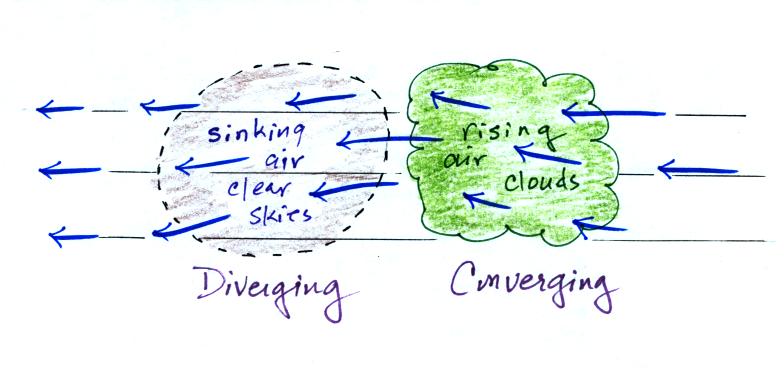

| Normal Pacific hurricane
activity |
Normal Atlantic hurricane activity |
| 16
tropical storms per year 8 reach hurricane strength 0 hit the US coastline |
10
tropical storms per year 6 reach hurricane strength 2 hit the US coastline |
| this
year 20 tropical storms (4th most active) 14 hurricanes (9 major) Hurricane Iselle struck the big island of Hawaii |
this
year
8 tropical storms 6 hurricanes (2 major) 1 made landfall in the US |
